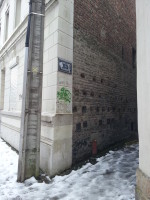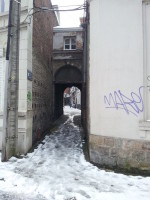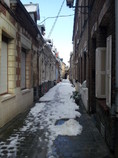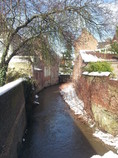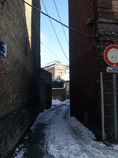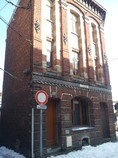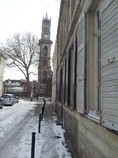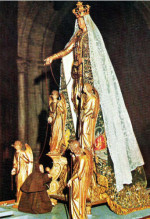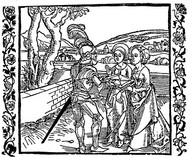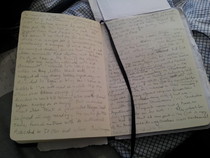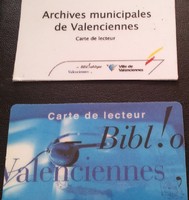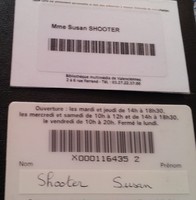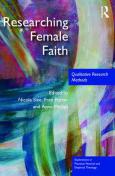Travel Log Thurs 14th March 2013
A walk round the beguinage area was my adventure this morning. I took out my map of Valenciennes with its different quarters and sights which I had been given by the lady at the Tourist Office earlier in the week. I have to mention that the people in this town are very friendly and helpful. For instance, drivers stop for pedestrians to cross even when said pedestrian is not at a designated crossing.
I wandered around the three streets which constituted the outer limits of the beguinage
area, and discovered the narrow entrance of the “enclos” with its tightly compacted houses. The Rhônelle, a tributary of the larger Escaut river, runs right through the centre of the beguinage area.
I took some snaps of how this waterway weaves in and out through the buildings.
It is puzzling that there should be an ‘enclosure’ at all. Beguines emerged in the explosion of evangelical lay piety around the same time as St Francis formed his band of brothers (friars, from French “frère”) in the early 13th century. St Clare, who wanted to follow the same path of poverty as Francis with her sisters was prevented from living such an open life of mendicancy, and was forced to accept enclosure. Beguines strenuously fought to maintain independence and their founding charters, including the one for Valenciennes, insisted on their intention to live by the work of their own hands. Perhaps with the view we have from this side of the historical gap, we see now the effects of the Council of Vienne which enforced capitulation to enclosure, but beguines were still allowed to leave the enclosure with the permission of the Souveraine.
According to those who have scoured the archives, there is no trace of Marguerite Porete in connection with Valenciennes beguinage. What they do record is an Inquisitorial review of the establishment in the wake of Vienne in the 1320s, as was the case for all beguinages. It appears that on this occasion the Bishop of Cambrai was supportive, avowing in 1322 that there was no irregularity to be found within the beguine community. (This incumbent of the influential see of Cambrai was neither Guy de Colmieu, who ordered The Mirror to be burnt in the “Grand Place” de Valenciennes, nor Philippe of Marigny who was in post at the time of Marguerite’s arrest in 1308). Perhaps the beguines had to destroy all evidence of a connection with Marguerite, the ‘dangerous heretic’, in order to be given a clean bill of health. On the other hand, perhaps we are barking up the wrong tree altogether and Marguerite may only have been born in the city, affording her the designation “de” Valenciennes. Whatever the case, there were still consequences rippling out from the Inquisition of Paris in the 1320s. Archives show that goods belonging to the Valenciennes beguinage had been confiscated at this trying time by the abbot of St Jean, who had pastoral oversight of the parish. He had obviously taken advantage of Inquisitorial suspicions. He was ordered to return the goods, and was still being badgered to do so in 1335. There were all sorts of wranglings about who had authority over this community of women in the early years; each Souveraine, supported by a committee of three other responsible beguines, would defend their right, as per their founding charter, to choose who was to be appointed as their chaplains. How we still wrangle over which gender should have spiritual authority over the other in ecclesiastical circles!
I tried to imagine what this area would look like when it was rural and situated outside the original town wall. Quite difficult to do in a very built-up area. There is a suggestion in the article I read yesterday that the beguinage had a farm within its boundary (including granary, barns and stables). So the beguines were organic farmers. I wondered how Ian was faring with the allotment, looking after the chickens. We’ve doubled our square footage this year and been given another greenhouse. I hope he’s looking after my tomato plants!
Another interesting fact I picked up is that one of the streets making up the border of the beguinage is called the Rue Comtesse. The name refers to the house in this street which the Countess of Hainaut owned and which she donated to the beguinage in 1278. Was this where Countess Marguerite of Hainaut and Flanders (also known as Margaret of Constantinople) had lived when she was in town? There is a lovely ornate house that now stands on the corner of Rue Comtesse/Enclos du Beguinage. It is not old enough to have been that same house, and probably not large enough, but maybe it stood on the same foundations – it often happened that newer edifices were erected where there had already been some building before, as with the Castle of the Count, to which I will come.
After a coffee in a new Starbucks-look-alike joint, where I took the opportunity to write up some of my musings, I set myself in the direction of the library. I passed the Church of St Géry on the way and I now realize I forgot to mention in my Wednesday log the visit I made here, whilst waiting for the Musée to open. The most surprising feature is that the belfry is a late addition (19th century) yet it looks really old from the outside. The church itself is now the oldest remaining church in Valenciennes. Like all medieval cities, Valenciennes had numerous churches and religious foundations - 19 according to my photocopied plan (see Wednesday Part 2 log). St Géry was built at the behest of the Franciscans and the original pillars and sanctuary of the mid-thirteenth century are still large as life. One of the pillars holding up the arch at the chancel step looks as if it follows the same angle as the leaning tower of Pisa! Visitors were asked to refrain from taking photos so I duly obeyed. Here is a link if you want to see more of the inside of St Géry.
And so back to Thursday’s trip to the library.
I had had an email response already from Madame Dion who wrote to say that M. Guillaume Broekaert, the library’s authority on ‘patrimoine’ would meet with me today, show me resources and help me with any questions I have. True to her word, her efficiency and the generosity of the ‘patrimoine’ dept of Bibliothèque Valenciennes, M. Broekaert arrived in the reading room, ready with several articles and books on the beguinage and Marguerite Porete under his arm. He gave me a little information about the materials, and he also assured me that if there were any manuscripts I would like to consult, just to let him know via the librarian on duty. The latter was a very obliging man who prepared my reading ticket which would give me future access to their archives. All he needed was my passport and a bit of form-filling; he was not too interested in the piece of paper I wafted under his nose – this was a copy of the letter of introduction to the British Library which the Bishop of Truro had kindly written to endorse me as a genuine researcher. I had brought it with me for just such an occasion. Meanwhile, M. Broekaert sent me a box and a folder containing all the medieval holdings in this library to do with the beguinage.
This was a seminal moment for me. I was inwardly trembling with the excitement of viewing and handling for the very first time a thirteenth century manuscript. As I opened the lid of the large grey cardboard box and lifted the protective paper enclosing the small, light piece of vellum, covered in a small, neat script, I could hardly contain myself. How lucky am I! I had worried about knowing how to behave at such a moment, until I had watched a You Tube video of Dr Janina Ramirez, cultural historian, who has done some excellent TV work (see for example Chivalry and Betrayal:The Hundred Years War for BBC4). According to her programme on the Royal manuscript collection, it is policy at the British Library that researchers do not wear gloves because fingers are far more sensitive when turning pages over and do less damage.
I was now looking at a document recording donations to
the beguinage of Valenciennes, made on vellum in 1280. And then an 18th century paper copy of a 1301 record of donations by Jehans Defour Les Wez and his wife Marie, his sisters Jehannen
and Agnies to various religious houses in the area, including the beguinage. The latter asked for ‘obits’ from the beguines in return. It was usual for donors to ask for prayers for their soul and
that of their family, and in 1293 the Countess of Condé made a similar request in exchange for
money given to the “povres femmes del hospital”. An ‘obit’ was a request for prayers to be said on the donor’s death, and on anniversaries of their death. Beguines were in particular demand
to be present at funeral processions and were ‘hired’ for this purpose. It is interesting that the founding charter of this beguinage stressed that when a beguine died, “each resident of the house
will say each day a psalm of David on the death and at vigils, and 7 psalms by the whole community”[1] for a whole month. At the end of the month there would be a service. It seems to me that these women
undertook the role of Deacon in that they cared for the sick, fed and taught the poor and accompanied people through the time of death. The beguinage at Valenciennes actually lost its task of running
the town hospital in the mid-14th century, when the St Jean hospital and the Hotel Dieu were founded. In later documents we find that the beguinage became a place where in particular poor
and sick women were taken in. A primary school appears to have been in existence, though, since the early days
as there are references to ‘parva schola’ in 1267 and 1270 manuscripts, and further mention in the
15th century. One of the 13th century documents refers to the
choice of two beguines to act as teachers.
[1]quoted in ‘Quelques moments de la vie des beguines valenciennoises à l’epoque médievale’ by Bernadette Dupont-Carpentier, Valentina 47, Sept 2011. This was one of the journals given me by M. Broekaert
It is clear that this was an elementary school, so it is hard to find a connection to Marguerite obtaining any of her deep learning here: she knew the writings of Augustine of Hippo; Denys the Areopagite (I love that name); Hugo and William of St Victor; the Alexander Romance; Jean de Meune’s famous “Roman de la Rose”; and Boethius’ Consolations of Philosophy. The Romance of the Rose was completed and Boethius was translated by the patronage of the King, Philippe le Bel, whom we will hear more of later. Marguerite also had considerable biblical knowledge.
Here is one of the anomalies about Marguerite and her connections: she must have come from a wealthy background, maybe even from the nobility to have acquired such learning - particularly as a female. The picture above from Geoffrey of Tourlandry's book on female pedagogy, shows that noble girls were educated. But Marguerite is not mentioned in any documents other than her trial records (some of which are missing) and short excerpts in later chronicles. And her method of execution, burning at the stake, suggests that she was not of the nobility. The considerable patronage which she must have enjoyed, or her own standing in society, or both, have disappeared into a puff of smoke (that was not meant to be a pun – too gruesome for words). I won’t go into the politics much more here, but I just need to mention that the most prominent and powerful of her theological admirers, Godfrey of Fontaines, a Master of Theology at the Sorbonne, died at some point around the time of her arrest. Perhaps this was more than significant to her ultimate fate.
It seems to me that Marguerite fell between several stools – she was the product of a unique set of circumstances, which produced a unique spiritual experience and theological voice; her end was not so unique but one that might have been avoided if history had not taken the turn it did in the 13 noughties.
After my enthralling afternoon with medieval vellum and
absorbing articles I returned with a notebook full of facts and references. I had neglected my diary for a couple of days because of the lure of the library so I decided to begin a blog. I have this
website which I haven’t used much. So to help me chew over this voyage of discovery – le voilà – a travel log which I am producing by sifting through my little black book, with the help of my mobile
camera and google. One more mention of the kind duty librarian: he again kept my books aside for tomorrow and introduced me to another wonderful librarian in the borrowing section. She agreed to make
me a membership card so that I could take out two of the books that M. Broekaert had given me and read them back at the hotel. I was coming back in the morning for my last assault on medieval facts
Valencinnois, so I could return the volumes then. This lady even retrieved the books from me when I returned to my desk (I am getting very possessive about the patrimoine section) and took them to
scan, to save me the trouble when I left. What largesse - one of Marguerite's favourite words to describe God's generosity. I am sure she must have come from Valenciennes!
